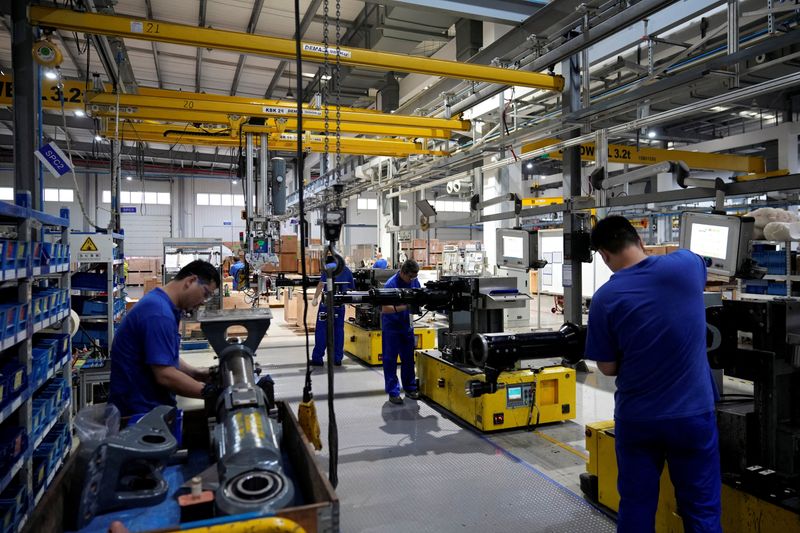China’s August factory activity likely shrank amid COVID flare-ups, property crisis – Reuters poll
2022.08.29 08:42

FILE PHOTO: FILE PHOTO: Employees work on the production line of vehicle components during a government-organised media tour to a factory of German engineering group Voith, following the coronavirus disease (COVID-19) outbreak, in Shanghai, China July 2
BEIJING (Reuters) – China’s factory activity likely contracted again in August, a Reuters poll showed on Monday, as COVID flare-ups and a distressed property sector pummelled demand while a power crunch in southwestern China hit production.
The official manufacturing Purchasing Manager’s Index (PMI) is expected to have risen to 49.2 in August from 49.0 in July, according to the median forecast of 23 economists polled by Reuters. Reversing previous gains in June, the gauge is expected to stay below the 50-point mark that separates contraction from growth.
China’s economy narrowly escaped contraction last quarter due to widespread COVID-19 lockdowns, and economists say its nascent recovery is in danger of fizzling out amid fresh virus flare-ups and the embattled property sector.
“High-frequency indicators such as container throughput and steel demand data weakened further in August from July,” analysts at Goldman Sachs (NYSE:GS) said in a note on Friday, forecasting the reading to edge down to 48.8.
Tighter COVID restrictions in August as well as the hot weather might have also affected outdoor construction activity due to the extreme heat and dragged down the services PMI, they added.
Searing heatwaves have swept across China’s vast Yangtze River basin since mid-July, hammering densely populated cities from Shanghai to Chengdu and causing the southwestern province of Sichuan to suspend industrial production to ensure residential power supply.
According to ING’s China economist Iris Pang, the damage caused by the drought’s power shortage is around 1% of GDP. The “most worrisome” aspect of the Chinese economy, however, was the deleveraging reform on residential property developers,” she said.
The property sector, which accounts for about a quarter of China’s economy, has been lurching from crisis to crisis since the summer of 2020 as a result of regulators stepping in to cut excess leverage, which led some developers to default on their debts and struggle to complete projects.
“Potential home buyers are watching to see whether uncompleted homes can be finished quickly and to a good quality. This takes time – at least a couple of quarters,” Pang said.
To prop up the ailing economy, the central government offered another package of stimulus, including raising the quota on policy financing tools by 300 billion yuan ($43.39 billion). The central bank also cut the benchmark lending rate and lowered the mortgage reference by a bigger margin.
The official manufacturing PMI, which largely focuses on big and state-owned firms, and its sibling survey for the services sector, will be released on Wednesday.
The private sector Caixin manufacturing PMI, which focuses more on small firms and coastal regions, will be published on Thursday. Analysts expect a headline reading of 50.2 for that, down from 50.4 for July.
($1 = 6.9140 Chinese yuan renminbi)








